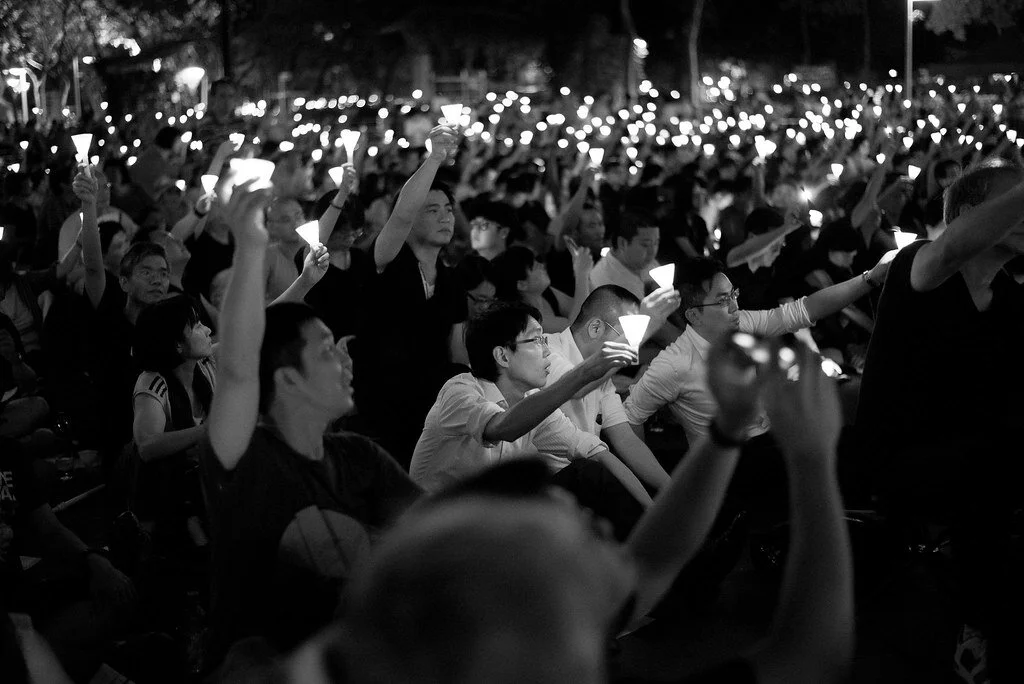In order to comply with China’s recent national security law, a well-known pro-democracy group was ordered to scrub its online presence.
A 2015 vigil for the 1989 Tiananmen Square Protests. VeryBusyPeople. CC BY-SA 2.0
In early September 2021, the Hong Kong Alliance in Support of Patriotic Democratic Movements of China, a well-known activist group in Hong Kong, received notices from officials to delete all online content to comply with the recent national security law. As a result, the group has closed its website as well as all social media pages, including their Facebook, Twitter and Youtube. The Hong Kong Alliance is most well known for hosting vigils for the 1989 Tiananmen Square student protests that resulted in hundreds of deaths. The protests in 1989 called for political and economic reform, and Chinese police responded violently and arrested tens of thousands of protesters. In addition, the group is known for advocating for democratic movements and does not hesitate to criticize the government online. Officials also used the national security law to arrest several leaders of the group who refused to provide information to police regarding the group’s funding and membership.
The security law went into effect on June 30, 2020, causing concerns that Hong Kong was losing its judiciary independence and other democratic freedoms such as freedom of speech and assembly. Under the initial 1997 agreement, when China gained control of Hong Kong from Britain, there was always supposed to be a national security law in Hong Kong. However, Hong Kong would retain a separate judiciary system. Hong Kong has previously had protests starting in 2019 in response to a law that allowed extradition to the mainland. The protests turned increasingly violent, and eventually, the extradition bill was withdrawn. The controversial security law criminalized succession, subversion of state power, terrorism and collusion with foreign entities. The law takes precedence over a local Hong Kong law, and a National Security Committee will be put in place with no local oversight. In addition, crimes considered to be serious national security threats will be tried on the mainland in Chinese courts, essentially a version of the extradition bill that was thrown out as a result of the 2019 protests.
The Hong Kong Alliance was not the first group that faced the consequences of the recent security law. Shortly after the law was enacted in 2020, many people deleted their social media, and pro-democracy media outlets deleted old posts and entire archives. The Hong Kong alliance has restarted a Facebook page. Still, it is unclear how the group will be using social media in the future.
Dana Flynn
Dana is a recent graduate from Tufts University and holds a degree in English. While at Tufts she enjoyed working on a campus literary magazine and reading as much as possible. Originally from the Pacific Northwest, she loves to explore and learn new things.







